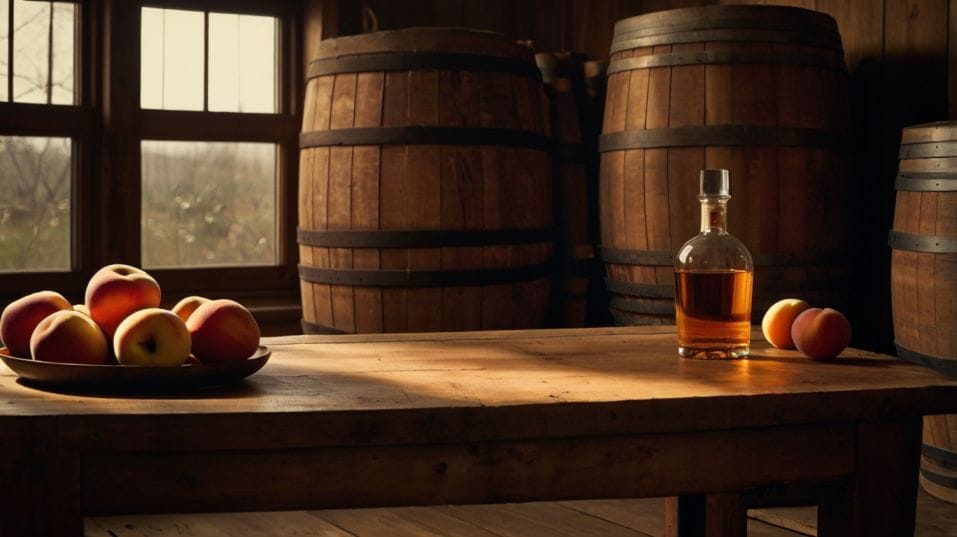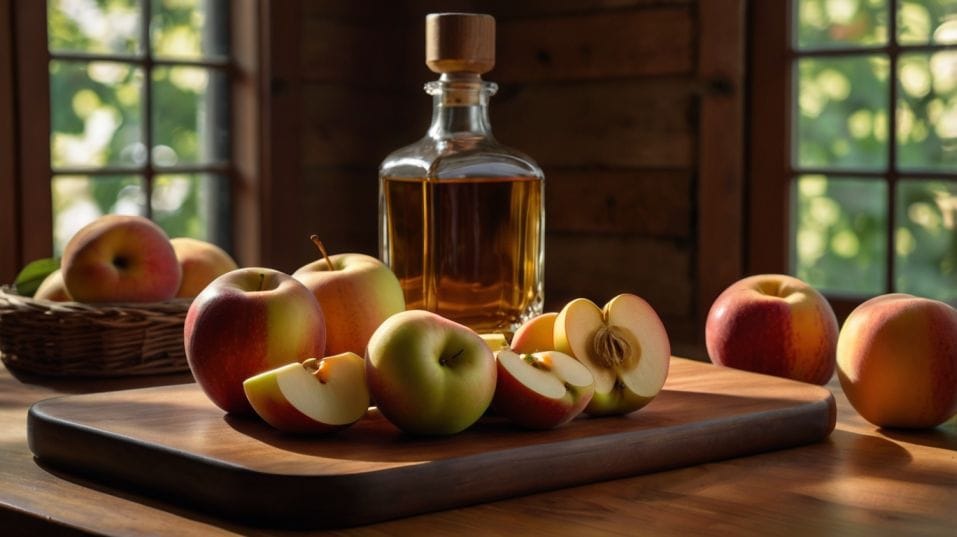Fruit Notes in Whiskey: From Apple to Apricot
Learn how to decode fruit notes in whiskey—from apple to apricot—and build tasting confidence, bottle by bottle, even as a beginner.

Ever tasted a whiskey and thought, “Why does this remind me of fruit?” That’s not your imagination—it’s insight waiting to happen. Fruit notes aren’t fluff.
They’re signals. Apple, pear, peach, apricot—each whisper tells you something about the whiskey’s age, process, and barrel life.
Whether you’re new to tasting or just tired of guessing, this guide helps you spot the flavors that matter and decode what they’re really saying.
What “Fruit Notes” Actually Are (and What They’re Not)
Let’s clear something up: no one’s adding fruit to your whiskey.
Those notes of pear or peach? They’re the result of esters—aromatic compounds formed during fermentation when yeast breaks down sugars.
The type of yeast used, how long it ferments, the temperature of the mash—all of it affects which esters develop, and in what concentration.
Then there’s distillation. The shape of the still, how tight the cuts are, and how the spirit is collected all impact which of those esters survive.
Age and wood come last. A spirit can pick up dried or baked fruit notes from oak itself—especially toasted American oak or sherry casks.
So when you’re picking up fruit in your glass, you’re not imagining it. But you are interpreting a long chain of choices made by the distiller. Now let’s decode them.

Apple: Clean, Tart, and Almost Always a Signpost
Green apple is one of the most common fruit notes, especially in younger whiskeys or those made with lighter cuts.
It’s sharp, fresh, and comes off almost like a Granny Smith sliced moments ago. This note shows up often in Irish pot still whiskeys, young bourbons, and some Lowland-style single malts.
But it’s not always green. Baked apple—think spiced pie filling or warm cider—can emerge in older whiskey aged in toasted or charred American oak.
Those deeper notes often come with cinnamon, clove, or caramel. If the apple leans cooked, you’re likely dealing with a richer, more developed spirit.
What it tells you:
- Green apple = youth, fresh distillate, minimal oak influence
- Baked apple = some age, active oak, possible spice from char
How to train for it:
Taste it side-by-side with a real apple. Sniff both. Then try the whiskey again. Your brain builds pathways faster when you can compare aromas directly.
Pear: Gentle, Elusive, and Worth the Chase
Pear is a quieter note—less zesty than apple, more muted. It’s the kind of flavor that makes you stop and think: Was that fruit, or just sweetness?
Fresh pear, especially the type that reminds you of canned pear syrup or overripe Bartletts, often points to long fermentation and soft distillation—narrow cuts, slow stills, less copper interaction.
You’ll find it in elegant malts from Scotland, lighter Japanese expressions, and some Irish whiskeys that favor purity over punch.
Unlike the high-acid apple, pear is rounded and slippery. It doesn’t dominate—it lingers in the background.
What it tells you:
- Pear = longer fermentations, low sulfur, restrained oak
- Often found in light-bodied, delicate spirits
How to catch it:
Pear doesn’t stand out unless you go looking for it. Try tasting a few lighter whiskeys back-to-back. Once you isolate it, you’ll notice how often it was hiding in plain sight.
Peach: Juicy, Floral, and Barrel-Born
Peach sits in the sweet spot—literally and figuratively. It’s rich, but not heavy. Floral, but still juicy. It tends to show up in whiskeys aged in active American oak, especially when the spirit was already slightly fruity to begin with.
Peach isn’t usually part of the distillate—it’s a maturation thing. You’ll find it when vanillin, lactones, and light oxidized sugars mix with lingering esters to form something soft and sunny.
It can lean fresh, like white peach, or deep and jammy, like peach cobbler. The fresher versions often appear in wheat-heavy bourbons or soft grain whiskeys. The jammy side comes out in older ryes or Scotch finished in dessert wine casks.
What it tells you:
- Peach = active wood, likely American oak, some spirit sweetness
- Often a sign of warmth and oxidation, not raw youth
Pro tip:
Let the whiskey sit. Peach notes build with air. First sip might miss them entirely. Second or third nosing—there it is.
Apricot: Dense, Ripe, and a Maturity Marker
Apricot is where fruit stops being cute and starts being complex. You don’t get apricot in three-year-old whiskey. This is a marker of age, oxidation, integration—especially in whiskeys aged in fortified wine casks like sherry, Marsala, or PX.
Unlike apple or pear, which can feel fresh and fleeting, apricot hits deep. It shows up as dried fruit—chewy, sweet, dense. It can also feel cooked, like apricot preserves simmered down with spice.
When you taste it, you’re likely in the presence of a serious cask—either something old or something with real weight behind it.
What it tells you:
- Apricot = well-aged, complex, often wine-cask finished
- Can indicate oxidative aging, good cask management
Tasting move:
Breathe out through your nose after swallowing. That retro-nasal effect helps expose deeper fruit notes—apricot lives in the finish more than the front.
How Fruit Notes Level Up Your Whiskey Game
Knowing fruit isn’t about flexing. It’s about clarity. Once you can identify a note and link it to process—fermentation, cut, cask—you start to predict flavor before you even sip. You begin collecting bottles not for the label, but for the profile.
You pick pours that suit your mood. You notice quality faster, and you stop wasting time chasing trends that don’t fit your taste. When you learn to read fruit notes, your palate stops being passive. You’re driving now.
Final Thoughts
Fruit isn’t filler. It’s a foundation. From apple to apricot, each note tells a story about what’s in your glass and why it tastes the way it does.
If you’re just starting your journey, don’t overcomplicate it. Choose one fruit note—apple, maybe—and spend the next week hunting it down. Taste different whiskeys. Smell them slowly. Revisit the same pour on different days. Get familiar.
Then move on to the next fruit. This isn’t just about developing your palate. It’s about building your confidence, one layer at a time. So pour something tonight. Stop swirling. Start listening. Your whiskey has a lot to say.




